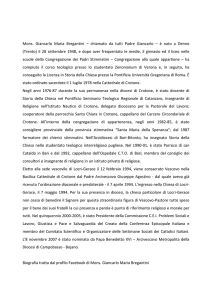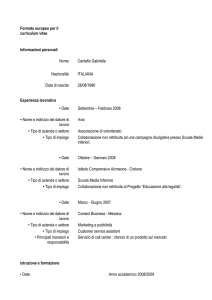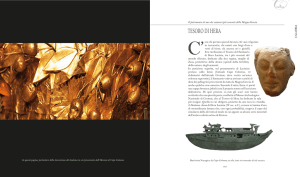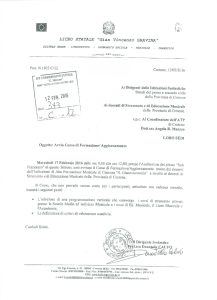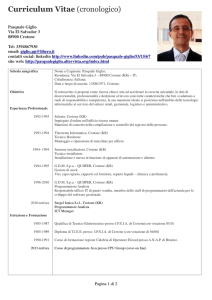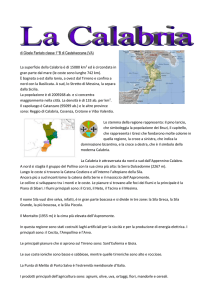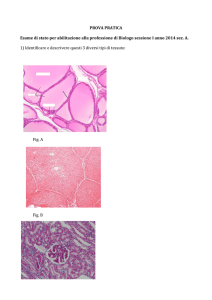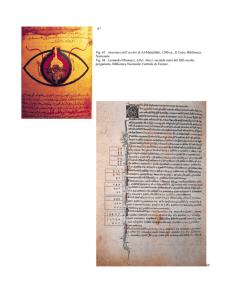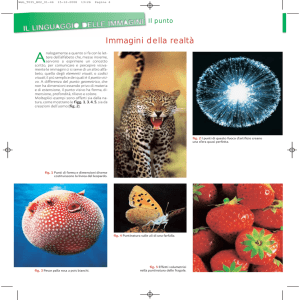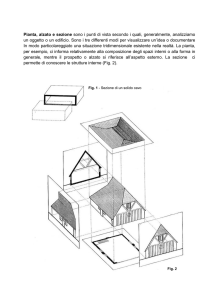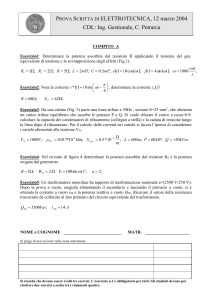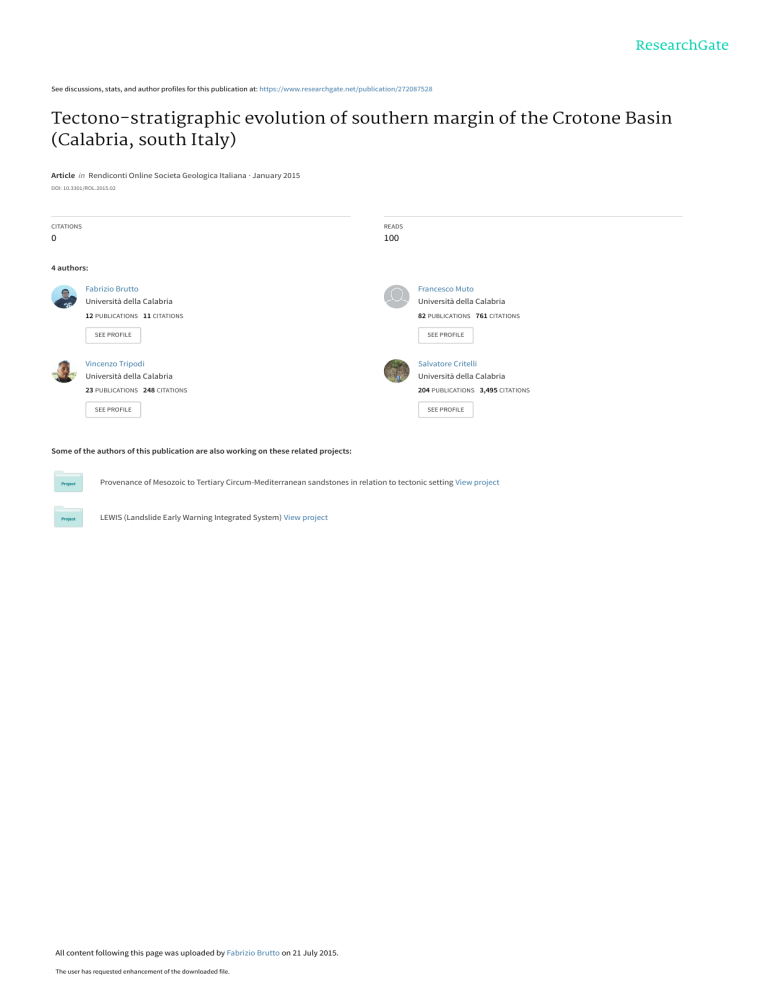
See discussions, stats, and author profiles for this publication at: https://www.researchgate.net/publication/272087528 Tectono-stratigraphic evolution of southern margin of the Crotone Basin (Calabria, south Italy) Article in Rendiconti Online Societa Geologica Italiana · January 2015 DOI: 10.3301/ROL.2015.02 CITATIONS READS 0 100 4 authors: Fabrizio Brutto Francesco Muto Università della Calabria Università della Calabria 12 PUBLICATIONS 11 CITATIONS 82 PUBLICATIONS 761 CITATIONS SEE PROFILE SEE PROFILE Vincenzo Tripodi Salvatore Critelli Università della Calabria Università della Calabria 23 PUBLICATIONS 248 CITATIONS 204 PUBLICATIONS 3,495 CITATIONS SEE PROFILE SEE PROFILE Some of the authors of this publication are also working on these related projects: Provenance of Mesozoic to Tertiary Circum-Mediterranean sandstones in relation to tectonic setting View project LEWIS (Landslide Early Warning Integrated System) View project All content following this page was uploaded by Fabrizio Brutto on 21 July 2015. The user has requested enhancement of the downloaded file. Rend. Online Soc. Geol. It., Vol. XX (2014), pp. XX-XX, 1 fig., x pl., x tab. © Società Geologica Italiana, Roma 2014 Tectono-stratigraphic evolution of southern margin of the Crotone Basin (Calabria, south Italy) Evoluzione tettono-stratigrafica del margine meridionale del Bacino di Crotone (Calabria, Italia meridionale) (a)(*) (a) (a) (a) Brutto F. , Muto F. , Tripodi V. , Critelli S. _____________________________________________________________________________________________________________________________ _______________________ _ (a) Dipartimento di Biologia, Ecologia e Scienze della Terra (DiBEST)- Università della Calabria, via Pietro Bucci, 87036, Arcavacata di Rende (CS) Italy. (*) E-mail: [email protected] Document type: Short notes _____________________________________________________________________________________________________________________________ _______________________ _ ABSTRACT The Crotone Basins (CB) (Zecchin et al., 2013 and references therein) is located in the eastern sectors of the Sila Massif. The CB depicts the Neogene-Quaternary foreland basin of central Mediterranean region. The study area is influenced by different set of NW-SE major transcurrent faults and their antithetic lineaments which show alternating episodes of transtensional and transpressional faulting. Southwestern sector of the basin was characterized by three main fault patterns: 1) Active since Serravallian, NW-SE oriented faults bordering the CB to the west and with a left-lateral strike slip kinematics at the first stage. This transtensional phase has produced the basin opening, filled by coarsegrained, sand, clay and evaporitic deposits. 2) To the central part of the study area, Miocene deposits was displaced by NNW-SSE and NE-SW oriented faults, this pattern displays a dextral transpressional kinematic which seems to replace extensional kinematic giving rise to local inversion of former basins. 3) The CB experienced a new extensional phase along N-S or NNW- SSE oriented normal faults, starting from the Middle Pleistocene period. . RIASSUNTO Il Bacino di Crotone (CB) si estende lungo il margine orientale del Massiccio della Sila. Il CB rappresenta uno dei bacini di foreland neogenici-quaternari del Mediterraneo centrale. L’area è caratterizzata da un insieme di faglie trascorrenti principali con orientazione NO-SE e i loro rispettivi lineamenti antitetici che mostrano episodi di cinematica tranpressiva a transtensiva. Il settore sud-occidentale del CB è caratterizzato da tre sistemi di faglia principali: 1) Il sistema di faglie NO-SE, attivo sin dal Serravalliano, borda le porzioni più occidentali del CB, mostrando una cinematica trascorrente destra durante l’ apertura del bacino. Questa fase transtensiva ha favorito la deposizione di sedimenti conglomeratici che evolvono verso l’alto a sedimenti fini (sabbie e argille) e in un secondo tempo a depositi evaporitici; 2) nella parte centrale dell’area di studio, i depositi miocenici subiscono una serie di deformazioni a causa del sistema di faglia NNW- SSE e NE-SW; questo pattern tettonico mostra una cinematica transpressiva destra che sembra sovrapporsi alla cinematica estensionale attiva almeno fino al Messiniano, producendo localmente l’inversione dei bacini più vecchi; 3) dal Pliocene medio il CB subisce una nuova fase estensionale lungo i sistemi di faglie normali N-S o NNO-SSE. KEY WORDS: Calabrian Arc, foreland basin, strike slip faults PAROLE CHIAVE: Arco Calabro, bacini di foreland, faglie trascorrenti INTRODUCTION The study area is located on the Ionian side of the northern Calabrian Arc, extending from the eastern flank of the Sila Massif, in the west, to the Tacina River, in the east (Fig.1). Complex palaeogeographic evolution of the Crotone Basin is tied to a several tectonic events which have characterized this region in the last 10 My. Major events are represented by high angle structures of the Middle Miocene to the Recent that dissected and folded preexisting low angle overthrust contacts. These high angle structures are represented by NW-SE oblique transcurrent faults and extensional faults (Van Dijk et al., 2000). This paper deals with tectono – stratigraphic evolution of an Ionian sedimentary basin which depicts a key sector of the Central Mediterranean region. Using new geological and structural data coming from geological survey it has been possible to provide further insights on the Neogene-Quaternary evolution of the Crotone Basin. Furthermore data from the project ViDEPI (Marcedusa 1 and Botricello 1) have been used for comparison to the results of this study obtained by geological and structural survey. Geological Setting The Crotone Basin (CB) is a Cenozoic basin belonging to the wedge-top depozone of the Calabrian foreland-basin systems (Perri et al., 2012, Critelli et al., 2013). The southwestern sector of the CB is infilled by a NeogeneQuaternary sedimentary succession divided by major unconformities. This succession overlies igneous-metamorphic basement of the uppermost Sila Unit thrust nappe. These sequences document the pulsating displacement (Tripodi et al., 2013) of the Calabrian Arc towards the southeast and the opening of the Tyrrhenian back-arc basin during the last 10 My due to the roll-back of the Ionian portion of the subducting lithosphere (Faccenna et al. 2005; Zecchin et al., 2012). Several authors have proposed that most of the subduction system (Apennines- Calabrian Arc) has partially or completely undergone detachment of the subducting lithosphere (Fig.1) BRUTTO ET AL. 2 Fig. 1: Geological map of study area: 1. Holocene deposits; 2. Marine and Continental terraces; 3. Marcedusa Arenites ; 4. Cutro Clay; 5. Cavalieri Marl; 6. Carvane Group; 7. Petilia Policastro Fm; 8. Calcare di Base Fm.; 9. Tripoli Fm and Ponda Clay; 10. Clypeaster Sandstones; 11. S. Nicola Fm; 12. Basement rocks. Fig, 1: Carta geologica dell’area: 1. Depositi olocenici; 2. Terrazzi marini e continentali; 3. Areniti di Marcedusa; 4. Argille di Petrogallo; 5. Marne dei Cavalieri; 6. Gruppo delle Carvane; 7. Fm Petilia Policastro; 8. Fm Calcare di Base; 9. Fm del Tripoli e Argille del Ponda; 10. Arenarie a Clipeastri; 11. Fm S.Nicola; 12. Substrato. (Neri et al., 2009; Guarnieri et al., 2006; Wortel & Spakman, 2000), followed by rebound (uplift) when the propagating tear passes underneath the plate margin segment involved (Wortel & Spakman, 2000). The study area is influenced by different set of NW-SE major transcurrent faults and their antithetic lineaments which show alternating episodes of transtensional and transpressional faulting. These structures belong to the larger fault system named Petilia-Rizzuto Fault Zone which acted an oblique, sinistral shear zone between the Sila Piccola block and the Sila Grande block since at least the middle Miocene (Van Dijk et al., 2000). Stratigraphy The CB stratigraphy (Fig.2) is characterized by a series of stratigraphic sequences (Roda, 1964, Barone et al., 2008, Massari et al., 2010). The CB sedimentary succession can be subdivided into three main tectono-stratigraphic sequences : 1. The first sequence (Serravallian – Early Messinian) is a transgressive sedimentary unit which overlies the Sila Massif. At the bottom, this sequence shows alluvional fan and fluvial deposits of the San Nicola Formation (Fm), formed by brown to reddish conglomerates. This succession passes upward to shelf deposits, characterized by grey bioclastic (Ostrea and Chlamis) to silicoclastic sandstones, Clypeaster Sandstones (Fig.2a, 2b), and overlain, in turn, by deeper-water grey- blue marls and biosiliceous clay (diatomite and organic-rich laminites) referred to Ponda Clay and Tripoli Fm, respectively (Massari et al., 2010). TECTONO-STRATIGRAPHIC EVOLUTION OF SOUTHERN MARGIN OF THE CROTONE BASIN 3 Fig 2: Stratigraphic column of the Crotone Basin (Zecchin et al., 2013) and sedimentary units in the study area: a), b) Clypeaster Sandstones; c) Calcare di Base; d) Petilia Policastro Fm; e), f) Carvane Group; g) Cavalieri Marl; h) Cutro Clay. Fig. 2: Colonna stratigrafica del bacino di Crotone (Zecchin et al., 2013) e unità sedimentarie dell’area; a,) b) Arenarie a Clipeastri; c) Calcare di Base; d) Fm di Petilia Policastro; e), f) Gruppo delle Carvane; g) Marne dei Cavalieri; h) Argille di Cutro. 2. 3. Second sequence (Early Messinian – Late Messinian) is bounded at the bottom by an abrupt erosional surface, due to severe sea level changes (Messinian Salinity Crisis). The Calcare di Base is the lower sedimentary succession of this sequence stratified carbonate deposits and grey marls, up to 60 m thick, near the Crocchio River, (Fig.2c), this unit overlies the Tripoli Fm. An intra-Messinian unconformity marks a thick non-marine mudstone (Massari et al., 2010), locally including fault-scarp breccias with large blocks of the Calcare di Base (Petilia Policastro Fm) (Fig.2d). The Petilia Policastro Fm (LagoMare deposits) outcrops extensively in the Fosso Umbro. In turn this sedimentary succession is covered by the Carvane Group with an erosional unconformity. The Carvane Group consists of a fining-upward continental succession up to 50 m thick, formed by conglomerates, passing upward to sandstones, siltstones and claystones (Fig.2e) (Barone et al., 2008). The third sequence (lower Pliocene–Middle Pleistocene) is characterized by grey-brown claystone and siltstone enriched in foraminifera (Massari et al., 2010), and by the Cavalieri Marl and the Cutro Clay outcropping in the Petrogallo area (Fig.2f). These deep- marine units show an apparent continuity, whereas the seismic data exhibit that the two formations are separated by an unconformity: Timpa Biso Unconformity (TBU) (Zecchin et al., 2012). Structural Data Geological survey has allowed to collect about 250 fault planes, distributed in the whole investigated area. The study area is marked by different set of NW-SE major transcurrent faults. The most prominent morphological evidence of the NW–SE fault system is in the Petilia-Rizzuto Fault Zone, an oblique, sinistral shear zone between the Sila Piccola block and the Sila Grande block, active since the middle Miocene (Van Dijk et al., 2000). The NW-SE fault system (Fig.3) bordering the Fosso Umbro depression, is characterized by right-lateral and leftlateral movements with associated transtensional and transpressional structures. The NE–SW fault system has normal, right- lateral kinematics. The E-W oriented faults display a normal kinematics that prevail over other ones, whereas N–S normal faults show a significant distribution in mesostructural data, widespread both sedimentary and crystalline outcropping. BRUTTO ET AL. 4 Fig. 3: Stereographic projections of mesoscopic fault planes, grouped by orientation and kinematics. Fig. 4: Proiezioni stereografiche dei piani di faglie mesoscopici, raggruppati per orientazione e cinematiche CONCLUSION Using new geological and structural data coming from geological survey it has been possible to provide further insights on the Neogene-Quaternary evolution of the Crotone Basin. This sector is characterized by three main fault systems: 1) NO-SE fault systems, probably active from Serravallian age, border western and central sector of the study area. It shows an extensional and transtesional kinematics that contributed to the basin opening. The CB underwent a severe sea-level changes, during the Messinian period (Messinian Salinity Crisis) and, in the study area, limestones and non-marine mudstones with levels of resedimented gypsarenites were deposited. This succession is bounded by two unconformities at the base and at the top, and it is overlain by the silicoclastic succession; 2) in the central part of the study area, the Miocene deposits undergo several tectonic deformation due to NNW-SSE and NE-SW orientated faults; this fault pattern shows a transpressional kinematics that masks preexisting transtensional kinematics, producing locally basin inversion; 3) starting from the Middle Pliocene the basin undergo a new extensional tectonic phase along N-S and NNO-SSE normal fault systems, probably coeval to the Cavalieri Marl and the Cutro Clay deposition. ACNOWLEDGEMENTS We are gratefull to F. Perri for reviews, discussions, and thoughtful comments on this work. REFERENCES Barone, M., Dominici, R., Muto, F. & Critelli, S. (2008) Detrital modes in a late Miocene wedge-top basin, northeastern Calabria, Italy: compositional record of wedge-top partitioning. J. Sediment. Res., 78, 693–711. Critelli S., Muto F., Tripodi V. & Perri F. (2013). Link between thrust tectonics and sedimentation processes of stratigraphic sequences from the southern Apennines foreland basin system, Italy. Rend. Online Soc. Geol. It., 25, 21-42. Guarnieri, P. (2006). Plio-Quaternary segmentation of the south Tyrrhenian forearc basin. Int. J. Earth Sci., 95,107118. Massari F., Prosser G., Capraro L., Fornaciari & Consolaro C., (2010). A revision of stratigraphy and geology of south western part of the Crotone Basin, South Italy. It. J. Geosci., 129, 353-384. Neri G, Orecchio B, Totaro C, Falcone G, Presti D (2009) Subduction beneath southern Italy close the ending: results from seismic tomography. Seismol. Res. Lett., 80, 63-70. Perri F., Critelli S., Dominici R., Muto F., Tripodi V., Ceramicola S. (2012) - Provenance and accommodation pathways of late Quaternary sediments in the deep-water northern Ionian Basin, southern Italy. Sedimentary Geology, 280, 244-259 Roda, C., 1964. Distribuzione e facies dei sedimenti Neogenici nel Bacino Crotonese. Geol. Roman., 3, 319-366. Tripodi, V., Muto, F. and Critelli, S. (2013) Structural style and tectono-stratigraphic evolution of the NeogeneQuaternary Siderno Basin, southern Calabrian Arc, Italy. Int. Geol. Rev., 4, 468-481. Van Dijk J.P., Bello M., Brancaleoni G.P., Cantarella G., Costa V., Frixa A. & Golfetto F., Merlini S., Riva M., Torricelli S., Toscano C. & Zerilli A. (2000). A regional structural model for the northern sector of the Calabrian Arc (southern Italy). Tectonophysics, 324, 267-320. Wortel, R., and W. Spakman (2000). Subduction and slab detachment in the Mediterranean-Carpathian region. Science, 290, 1910-1917. TECTONO-STRATIGRAPHIC EVOLUTION OF SOUTHERN MARGIN OF THE CROTONE BASIN Zecchin, M., Caffau, M., Civile, D., Critelli, S., Di Stefano, A., Maniscalco, R., Muto, F., Sturiale, G., Roda, C., (2012). The Plio-Pleistocene evolution of the Crotone Basin (southern Italy): interplay between sedimentation, tectonics and eustasy in the frame of Calabrian Arc migration. EarthSci. Rev. 115, 273-303. Zecchin, M., Caffau, M., Di Stefano, A., Maniscalco, R., Lenaz, D., Civile, D., Muto, F., Critelli, S., (2013). The Messinian succession of the Crotone Basin (southern Italy) I: Stratigraphic architecture reconstructed by seismic and well data. Marine Petrol. Geol., 48, 455-473. View publication stats 5


